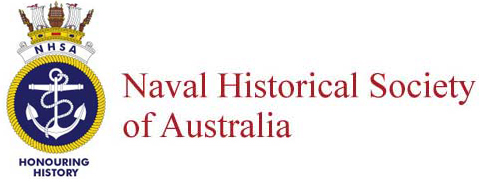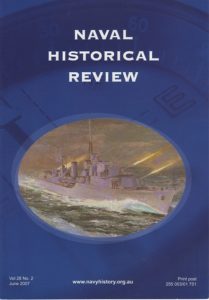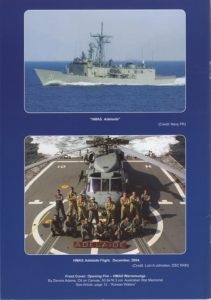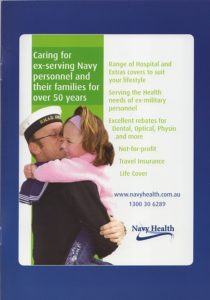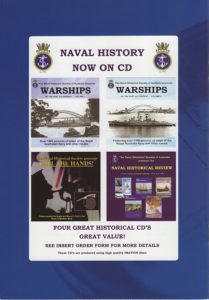- Author
- Editorial Staff
- Subjects
- Biographies and personal histories, History - WW1, History - WW2
- Tags
-
- RAN Ships
- HMAS Platypus, HMAS Australia I, HMAS Sydney I
- Publication
- June 2024 edition of the Naval Historical Review (all rights reserved)
By Walter Burroughs
In the northern Sydney suburb of Turramurra lies St James’ Church and adjacent is a War Memorial Hall with its honour board containing the names of those from this parish who gave their lives in World War I and World War II. The names are alphabetically listed showing the family name and initials, with no indication of rank or from which arm of the services they came. In this rather inconspicuous list is ‘Blackwood, M B R’. Surely there is more here as two fatal explosions tell.
Blackwood – First Generation
The Blackwood family are noted in the annals of British naval history over many generations. Henry Blackwood (1770 – 1832) was an Irishman serving in the Royal Navy. As captain of HMS Euryalus he commanded the inshore squadron at the Battle of Trafalgar. Blackwood was a friend of Nelson and witnessed the great man’s will. With Captain Hardy he attended the Admiral’s funeral at St Paul’s Cathedral.
In February 1807 Captain Blackwood was in command of the 74-gun ship HMS Ajax attached to a squadron under Admiral Sir Thomas Duckworth, and long before Gallipoli, was involved in forcing the Dardanelles. A nightlight left unattended in Ajax’s bakery resulted in an inferno, the ship exploding with the death of 252 men, including many who had served at Trafalgar. Captain Blackwood, who was found clinging to an oar, was lucky to be alive and subsequently court-marshalled, but absolved of blame.
Later as Vice Admiral Sir Henry Blackwood he was C-in-C of the East India Station and afterwards C-in-C at the Nore. He died on 13 December 1832 aged 61 and is buried in the family vault at Killyleagh Church in County Down Northern Ireland.
Blackwood – Second Generation
Francis Price Blackwood (1809 – 1854) was the second son of Vice Admiral Sir Henry Blackwood. In 1833 Commander Francis Blackwood RN, in command of the sloop HMS Hyacinth, made his first voyage to Australia, providing notable surveys on the east and west coast, demonstrating his considerable hydrographic survey skills. The Blackwood River in West Australia is named after his father. In 1841, now a captain, Blackwood commanded the sloop HMS Fly accompanied by the cutter HMS Bramble (Lieutenant Charles Yule RN) conducting extensive surveys of the Torres Straits and New Guinea. Blackwood in Victoria is named after Francis Price Blackwood and the Fly River in PNG is named after his ship.
Blackwood – Third Generation
A son of Captain Sir Price Blackwood was Maurice Baldwin Raymond Blackwood (1882 – 1941). Maurice had a distinguished Royal Naval career with number of commands and during the First World War was awarded the DSO. In 1915 in London he married an Australian lady, Dorothea Edwards, daughter of Mary and the late Honourable George Edwards MHR.
George Edwards
George Edwards. who was born in Tasmania. was a successful journalist and businessman and later a politician. He married Mary Peacock, heiress to the Henry Jones/IXL jam fortune.
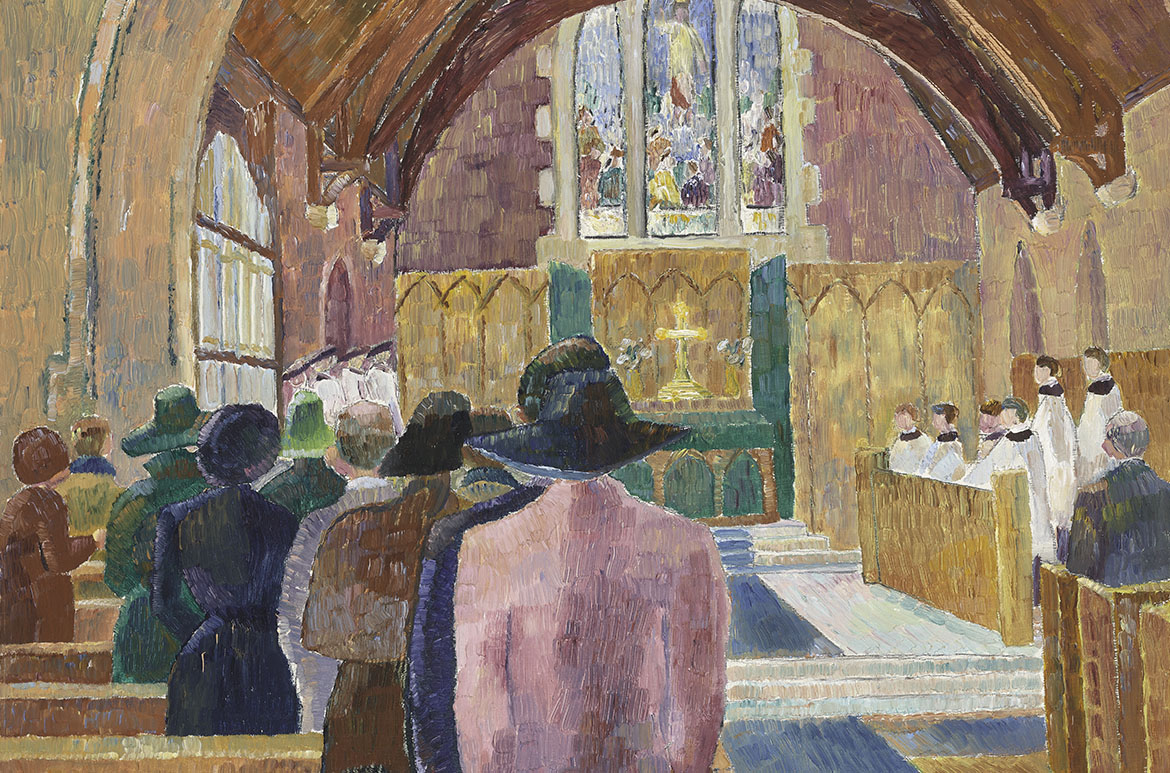
The couple moved to Sydney where in 1895 they purchased 50 acres at North Turramurra for a potential orchard. A railway station had been opened at Eastern Road in 1890 and later that year the name was changed to Turramurra. A couple of years afterwards they built a home here called Huon Park. Mr Edwards became a member of the first Federal Parliament, winning the seat of South Sydney.
A keen improviser, George Edwards installed a windmill to pump water from a well at Huon Park. The water went into a roof-top tank and then through gravity provided running water to the household. In another initiative a gas generator provided gas for lighting purposes to the property which functioned very well for many years. But at breakfast on a fateful St Valentine’s Day, Saturday 14 February 1911, a valve on the gasometer located in a nearby shed was broken and needed repair. To assist in this task George called on John Graham who had been working on the property and had some knowledge of boilers. About noon his daughter heard a loud explosion (said to have been heard as far away as Chatswood) that saw the tank fly into the sky and the iron roofed shed scattered in all directions. Both George Edwards and John Graham died as a result of this tragic accident. His widow, Mrs Mary Edwards, chose to never live in Huon Park again.
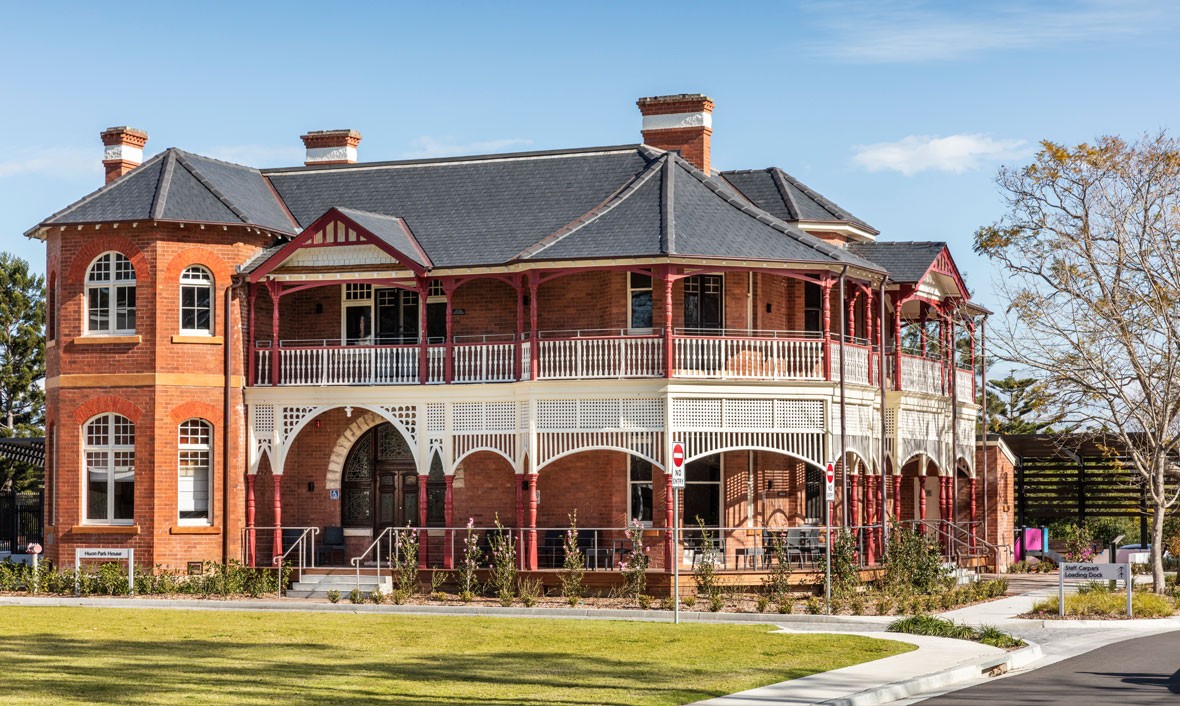
Captain Maurice Blackwood DSO RAN
Post war Maurice and Dorothea settled at Huon Park where the young couple had three children. With its extensive grounds we believe polo was played at Huon Park. Maurice transferred from the RN to the RAN and was appointed as aCommander on the Emergency List on 31 December 1916. From September 1919 to September 1921 he was Executive Officer of the cruiser HMAS Sydney and the last commanding officer of the battlecruiser HMAS Australia, until she decommissioned on 12 December 1921. He then commanded HMAS Platypus from 13 July 1922 to 31 May 1923. During this period Platypus had changed from being a submarine depot ship in Melbourne to a destroyer depot ship based in Sydney. On 27 September 1927 he was promoted Captain RAN on the Emergency List and shortly afterwards retired.
The Naval Auxiliary Patrol (NAP) as it became known evolved from discussions between Captain Blackwood and boat owners Harold Nobbs and William Giles who submitted their suggestions to a friend, Commander Rupert Long, the Director of Naval Intelligence. The Naval Board agreed to the concept and the Volunteer Coastal Patrol started on 27 March 1937 with Captain Maurice Blackwood as the first commanding officer with Harold Nobbs and Bill Giles as the senior officers. The NAP performed invaluable service during WWII and was especially active during the Japanese midget submarine attack on Sydney Harbour.
Captain Blackwood was reinstated for temporary service on 11 December 1939. He was Commodore of the first Australian and New Zealand WWII convoy, US1, which commenced in New Zealand on 4 January 1940 and arrived at Sydney on 10 January 1940. This large convoy of 11 transports plus escorts carried over 13,000 Australian and New Zealand troops to the Middle East, arriving at Suez on 2 February 1940. Owing to ill health Captain Blackburn was obliged to relinquish command in May 1940 and he died aged 58 at the Prince of Wales Military Hospital Randwick on 26 August 1941.
Huon Park is now the name of a nearby aged care facility but on the other side of the road. However, the original house still exists (now 402 Bobbin Head Road). In 1959 The Poor Sisters of Nazareth established a community on the site, thenof six acres. In 2002 the facility was repurposed as an age care home operated by Southern Cross Care.
Blackwood – Fourth Generation
Maurice and Dorothea had three children, George, Mary and Henry. Both boys followed their father’s profession and George joined the Royal Navy, retiring post-war as Commander George Blackwood OBE DSC RN. Henry joined locally in February 1940 as a Midshipman RANR(S) and served in the South West Pacific mainly in amphibious operations; he was demobbed as a Lieutenant in January 1947. Miss Mary Blackwood of Huon Park Turramurra married Mr John Clarence Farncomb of Clifton, Ranelagh, Tasmania on 7 September 1940 at St Andrew’s Church Wahroongah. Following their marriage Mr & Mrs Farncomb resided in Melbourne.
More Blackwoods
To add another layer of intrigue to this research an inspection was made of the gates at the Turramurra Memorial Park which is not far from St James’ Church. On these gates are inscribed the names of those from the local area who sacrificed their lives in the First World War. Amongst these names is Blackwood P. So who was he? A search of the Australian National Archives shows only two men with this name and initial served in WWI.
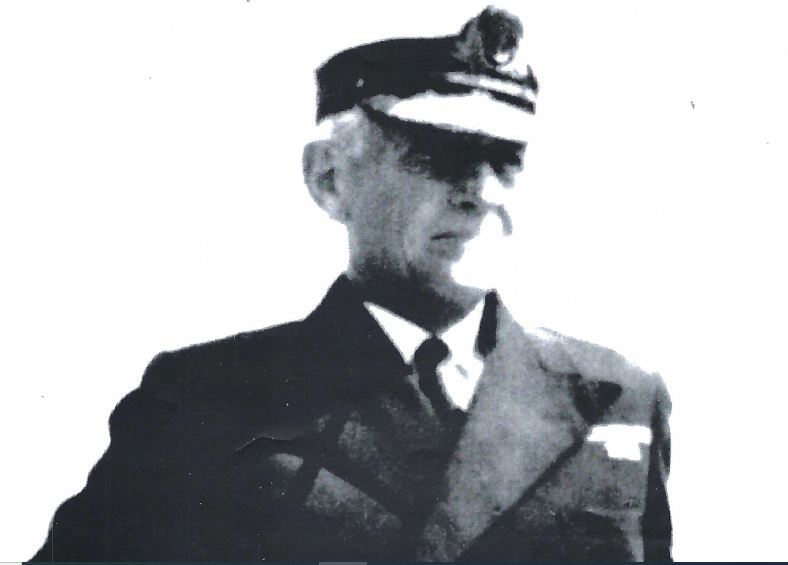
Percy Edward Blackwood
Perhaps someone with the most unusual of military careers is Percy Edward Blackwood who came from Melbourne. As a 29-year-old labourer he responded to a ‘Cooee Call’ and enlisted in the AIF at Bathurst NSW on 28 October 1915, but on reaching Sydney a month later was discharged medically unfit, with a then common problem, of defective teeth. With some teeth removed he re-enlisted at Casula NSW on 21 December 1915 but owing to disciplinary problems was discharged ‘services no longer required’ on 6 April 1916. The ever-persistent Blackwood again re-enlisted at Dubbo on 26 October 1916 and arrived in England on 9 January 1917.
In May 1917 he was facing the enemy in France until being granted leave in England in February 1918. This led to a series of absences without leave and subsequent detention. Being involved in a mutiny on 24 March 1919 he was sentenced to 11 years penal servitude and later that year was shipped back to Australia to serve out the remainder of his sentence. He was discharged ‘services no longer required’ on 30 October 1919 and it is assumed the remainder of his sentence was commuted. His papers say ‘not eligible for war service medals’. He seems an unlikely candidate to be commemorated on a Sydney suburban war memorial.
Pinkstan Hamilton Blackwood
Frederick Martindale Blackwood was a doctor and surgeon who graduated from Durham University in 1884 and on coming to Australia first settled in the Sutherland Shire. Blackwoods Beach just south of Cronulla is named after him as he had a property there in 1901. The doctor married a widow, Elizabeth Adams, and on 13 November 1898 a son, quaintly named Pinkstan Hamilton Blackwood, was born. This branch of the Blackwood family is beyond the scope of this magazine but worthy of a Dickens novel.
In 1904 Elizabeth died and the doctor remarried, to Elizabeth Jessie Scott. In 1908 Dr Blackwood moved his practice to the North Shore, living at ‘Maneera’, Lane Cove Road, Turramurra. This residence on the corner of Cherry Street and the Pacific Highway is now known as 1359 Pacific Highway. Dr Blackwood was appointed to the Army Medical Corps Reserve as an Honorary Captain on 28 November 1916.
In 1953 the substantial ‘Maneera’ became a home for polio victims, renamed ‘Cherrywood’, and in 1974 became the ‘Cherrywood Nursing Home’. Finally, in 1994 the residence was converted into ten separate apartments.
Pinkstan Blackwood, who had served in the school cadets, entered the University of Sydney studying law. At aged 19 he deferred his studies and enlisted in the AIF on 23 September 1918 (confusingly the Australian National Archive index incorrectly lists him as Pinkston). With the war’s end his military career was remarkably short and he was discharged on 18 November 1918 to resume his legal studies and eventually became a solicitor. He died at Lady Davidson Hospital Turramurra in August 1978.
James Blackwood
There is another reference to James Blackwood, a 19 year old law student at the University of Sydney and member of the university scout unit (volunteer rifle corps) who joined the 2nd Battalion AIF on 19 August 1915. In June 1916 he was posted to the Western Front but was soon wounded and on 24 July taken to England for hospitalisation. He returned to the Front to the 30th Battalion on 14 October but on 24 November was again shot and taken to the field hospital where he succumbed to his wounds on 2 December 1916. James was the eldest son of Ludovic and Mary Blackwood. Ludovic was a well-known businessman who lived at ‘Maraba’, Beecroft Road, Pennant Hills. As James is recorded on the Beecroft War Memorial it would be unlikely that he was also named on the Turramurra Park War Memorial.
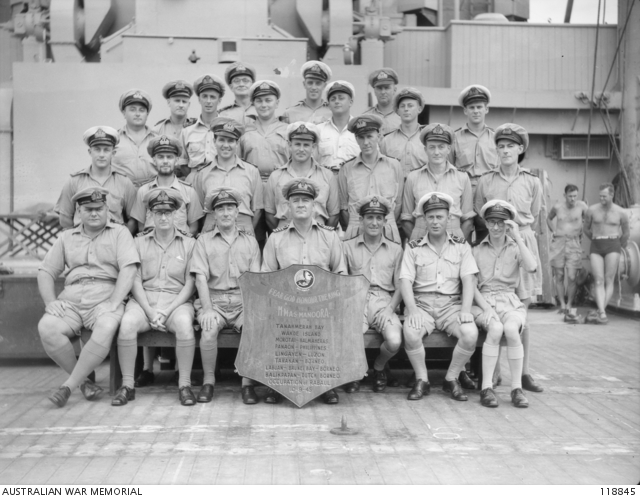
The mystery solved
After much research into the Blackwood families a kindly Local History Librarian, Ms Jessica Graham from the Ku-Ring-Gai Council directed us to The Trumpet Calls, produced by the Ku-Ring-Gai Historical Society, which provides a brief history of all those whose names appear on this memorial; the only Blackwood P is Pinkstan Hamilton Blackwood.
A war memorial is a commemorative object to remind us of those who served and died in war but we principally associate them with those who lost their lives. The Turramurra memorial contains the names of all those from the local area who served in the Great War with a small cross shown against the names of those who sacrificed their lives. Hence Pinkstan with his few weeks of service, possibly not venturing outside the Liverpool Camp, appears here.
References
Farley, Max, Huon Park, Ku-Ring-Gai Historical Society Newsletter August/September 2003.
Gill, G. Hermon, Royal Australian Navy 1939-1942, Australian War Memorial, Canberra, 1957.
Hordern, Lesley, Monuments and Memories – The Memorials of St James’ Anglican Church Turramurra, St James’ Church, 1995.
Moore, Peter, Blackwoods Beach, Sutherland Shire Historical Society Bulletin No 207, May 2018.
Rieth, Kathie, Rost, Allan, Turner, Janet, van Bergen, Jackie & Wilkins, David (Editors), The Trumpet Calls – Rallying the Troops – A World War 1 Commemoration, Ku-Ring-Gai Historical Society, Vol 1, Self-Published, 2014.
Rothnie, D. C., The Land of My Fathers: Letters of Private James Blackwood, self-published, 2018.
